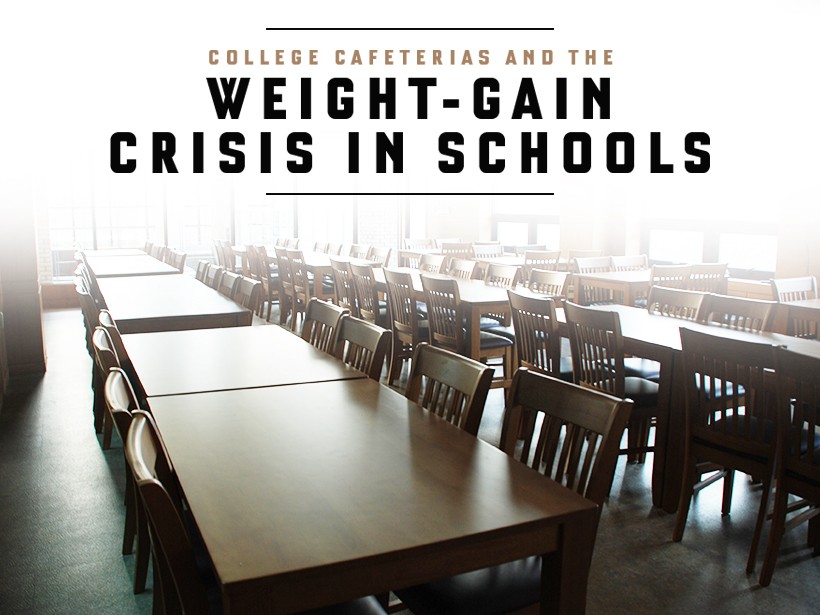Few high school and college students today are strangers to the concept of the “freshman 15,” the notion that students entering college tend to pick up some extra weight during their first year. According to a new study at Auburn University, however, this is no mere stereotype: 70 percent of college students gain weight by graduation, the average amount being around 12 pounds.1 There are, no doubt, a variety of causes for this surprising statistic, but one, in particular, should stick out to anyone who’s ever done a year or two in dorms: that both sacred and despised institution, the school cafeteria.
Research Shows Widespread Weight Gain
The researchers said that most of the weight put on was sheer body fat and attributed it to a variety of unhealthy habits common among college students. These included late night vending-machine-fueled study benders, long periods of little exercise, and poor options in dining halls.2
A similar study from last year in the Journal of Nutrition Education and Behavior found that over the course of four years of school, the percentage of overweight or obese students increased by 78 percent, from 23 to 41 percent of all students.3
These studies suggest a serious and sustained problem with student eating habits across the board. Looking to school cafeterias, this makes sense. College students are often provided with all-you-can eat buffets that they can check into only a limited number of times per week. What’s more these meal programs are ferociously expensive, the average plan costing students and families about 4,300 dollars a year. Soaring costs like these could conceivably work as an incentive for students to stuff themselves, as they can only check in 2-3 times a day and every meal comes out to about 8 dollars no matter what they take.
Profit Before Health
Reforming cafeteria programs, making them cheaper and healthier, is not a simple project or one that is likely to be picked by universities any time soon thanks to their centrality as a money-making machine. Notre Dame, for example, calls its food services “a major contributor of revenue to the university’s academic mission.” And that’s no joke: public universities in the 2013-14 school year made $2.3 billion more in revenue from their dining and other auxiliary services than they spent in the same year.4
Go a step further and ask yourself who they’re hiring to run these services and you’ll find names like Chartwells and Aramark—the same powerhouses who’ve been contracted by school districts around the country to systematically feed elementary school kids sugary, processed food for years. Just as in the case of primary schools, addressing the issue of obesity and unhealthy eating on college campuses requires first identifying the profiteers responsible and the administrators turning a blind eye.
NUTRITIONAL DISCLAIMER
The content on this website should not be taken as medical advice and you should ALWAYS consult with your doctor before starting any diet or exercise program. We provide nutritional data for our recipes as a courtesy to our readers. We use Total Keto Diet app software to calculate the nutrition and we remove fiber and sugar alcohols, like erythritol, from the total carbohydrate count to get to the net carb count, as they do not affect your blood glucose levels. You should independently calculate nutritional information on your own and not rely on our data. The website or content herein is not intended to cure, prevent, diagnose or treat any disease. This website shall not be liable for adverse reactions or any other outcome resulting from the use of recipes or recommendations on the Website or actions you take as a result. Any action you take is strictly at your own risk.
- For Keto, the Everyday Research Says it All - March 6, 2019
- Huge Harvard Study Backs Up the Wide-Ranging Benefits of a Low-Carb Diet - February 25, 2019
- Experts Convene for Keto Conference - July 30, 2018





Very good reporting. I wonder if this freshman weight gain occurred less frequently back in the day? I guess sugary, processed convenience foods have gradually seeped in…I have a friend who fondly remembers the hired cook in his fraternity house…I guess everything was made from scratch for those lucky boys….intriguing article… thanks.